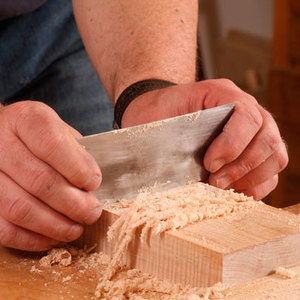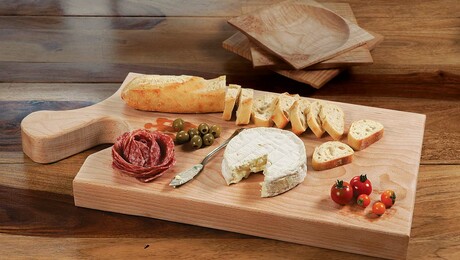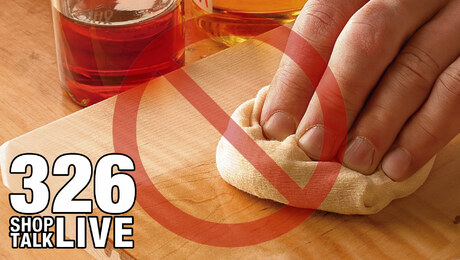Epoxy Inlay
Tough, fast-drying resins can replace traditional wood accents
Synopsis: Jeff Miller used wood for inlays for years until he figured out a way to tint epoxy for more intricate jobs. Splicing, cutting to length and mitering are all eliminated. Epoxy isn’t foolproof, however; there can be bubbles and voids, and the color occasionally bleeds into end grain. Miller explains how to do the job right and avoid problems. He also shares information on which brands and types have worked best for him. You’ll learn how to cut and trim the grooves, mix the epoxy and add color, and apply the epoxy with a stick. Then you watch for bubbles, and after it cures, you clean off the surface.
I’ve been designing furniture with decorative inlays for years. At first, I used wood strips for the inlay material, just as you’d expect. That was until I began a series of cherry pieces with intricate ebony inlay. Suddenly, I was yearning for an easier approach. So I began experimenting with other materials, and the best results came from epoxy.
Using epoxy means there is no careful sizing of wood strips to groove width, something of a problem when the strips are 1⁄16 in. to 1⁄8 in. wide and the grain isn’t perfectly straight. Splicing, cutting to length and mitering are all eliminated.
Epoxy is an attractive alternative, but it isn’t foolproof. There can be bubbles and voids, and the color occasionally bleeds into end grain. With practice, you can cope with these problems.
Epoxy resins are highly allergenic, and they are strong irritants. Wear gloves when handling epoxy, and use a good respirator. The resins give off fumes when mixed and when curing. Dust from epoxy is also an irritant. So take precautions when sanding.
Performance varies with the epoxy
Epoxy is well-suited for use as inlay. It doesn’t shrink as it hardens, it adheres well without requiring pressure, and there’s enough elasticity to cope with cross-grain movement. Many pigments and materials can be mixed in to create a variety of colors and effects.
I’ve tried a range of commercial products, from hardware-store brands (both quick and slow set) to more specialized formulations. Most give adequate results. I’ve had the best luck with Star E150 epoxy filler. It has a rather thick consistency (a little thicker than peanut butter), but it spreads easily, doesn’t show many bubbles and tends not to bleed into end grain. Different products have widely different cure times, mixing instructions and viscosities. A more liquid epoxy is easier to apply, but it tends to bleed more into end grain.
From Fine Woodworking #118
For the full article, download the PDF below:
Fine Woodworking Recommended Products

Odie's Oil

Bahco 6-Inch Card Scraper






















Log in or create an account to post a comment.
Sign up Log in